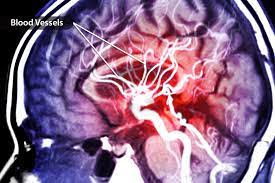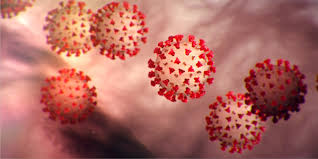I subscribe to everything related to health and stroke, and this article amazed
even me, who rarely gets shocked anymore.
This article by Jenna Basset appeared in General Surgery News: Futile Trauma Transfers Uncommon but Costly.
The reprint follows here; rather blasting comments appear at the end.
Despite making up less than 2% of trauma transfers, unsalvageable patients present a significant
cost burden to the health care system, researchers report.
Researchers at the
University of Kansas Medical Center (KUMC) investigated the rates and costs of
futile transfers within their organization between June 2017 and June 2019.
Futility was defined as a patient who had a stay that was no more than 48 hours
that resulted in death, implementation of hospice care or discharge with no
major operative, endoscopic or radiological intervention.
Within the study
period, there were 1,241 trauma transfers. Among the 407 trauma transfers with
hospitalization time less than 48 hours, 18 patients (1.5% of the study
population) were deemed futile. In both the futile and nonfutile groups, the
majority of patients were transferred for traumatic brain injury and the need
for neurosurgical consultation or intervention.
The researchers evaluated injury
severity among transferred patients using the Injury Severity Score (ISS), a
validated score that correlates with morbidity, mortality and hospitalization
time after trauma. Scores above 15 indicate severe injury. image Futile
transfers were older, with more severe injuries as indicated by a median ISS of
21 versus 8 in nonfutile patients.
Specifically, futile patients had more severe
injuries to the head and torso. The median cost of treating futile patients each was
$56,396, and the total cost to the health care system exceeded $1.7 million
during the two-year study period.
The authors estimated that elimination of
futile transfers would result in a cost savings of over $27 million annually in
the United States.
“Our study clearly has limitations in that our data
represents the retrospective experience of a single institution serving a large
network of rural referral facilities,” explained presenting author Craig
Follette, DO, a general surgery resident at KUMC, in Kansas City. “The data may
not be able to be generalized to other trauma networks but could be compared to
similar regional networks.”
Dr. Follette also added that the study definition of
futile was conservative, which may affect study conclusions, and the data do not
show the intricacies of what occurs in the period surrounding a trauma transfer.
“It is possible that patients received therapies not available at referral
centers, although, in our experience, this would be extremely unlikely in the
absence of ongoing consultant care.”
To optimize trauma transfer, the
researchers propose a new trauma transfer paradigm that incorporates a
telehealth support component that could be used to extend specialist support to
critical access hospitals.
“While beyond the scope of this paper, we believe
that this future state will involve enhanced means of communication through
telehealth/tele-trauma, and the overall sharing of Level I trauma center
expertise beyond the walls of the center itself,” Dr. Follette said. “I believe
the next step is collaboration with other centers in multicenter studies to
truly define this special patient population and guide further resource
utilization region by region.”
The authors concluded that additional work is
needed to avoid futile care and ensure appropriate allocation of health care
resources to patients who will benefit.
--------------------------------------------
Let me tell a story to set up my comments. A college friend 50 years ago (this is a whopper of a story accounting for why I remember it) told me that her husband's grandmother was dying and was in hospice at the facility in Florida. He lived in Pennsylvania, but his brother was a Florida resident. The two of them came up with a plan. Since grandma was at death's door and lived in a ritzy apartment, her hubby took a car trip and a huge trailer to Florida, met his brother, and went to Grandma's apartment to divvy up whatever appealed most to each of them. Even the marble floor was chipped away carefully.
After they were done, with the large apartment empty and, satisfied with their "inheritance," her hubby took the car and the trailer back to Pennsylvania where he unloaded all the wonderful contents. He placed them in his gorgeous house, even the marble floor.
One problem: their grandmother lived, survived hospice care, and stayed in the hospital until she strong enough to return. Her hubby took all the contents back to Florida, even the marble floor. His brother did the same, too, and "restored" her apartment with the same things two weeks after they had taken them.
Lesson learned: Just because the person appears "futile," life is over when it's over, not a second before.
"Futility was defined as a patient who had a stay that was no more than 48 hours that resulted in death, implementation of hospice care or discharge with no major operative, endoscopic or radiological intervention" and is pointless.
If that were the case, I wouldn't be here today because "no major operative, endoscopic or radiological intervention" in under 48 hours was done. The doctor had enough compassion to wait, and that waiting saved me.
Every hospital should try, by any means and no time factor present, to keep the patient alive. That person is someone's parent or sibling or cousin or friend or colleague.
Yogi Berra, celebrated baseball played and New York Yankees manager, is said to have originated the phrase "The game isn't over till it's over."
Exactly my point, Yogi.



















